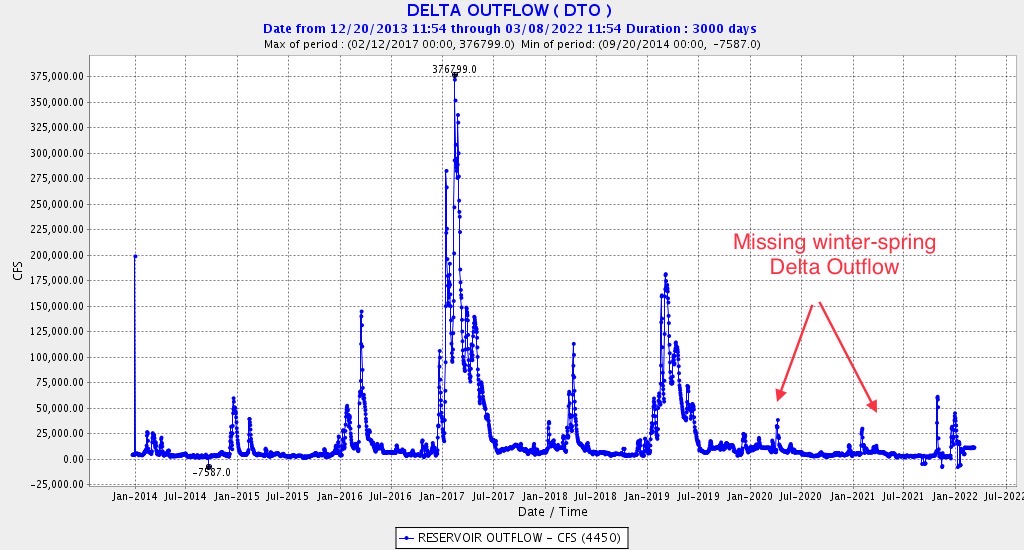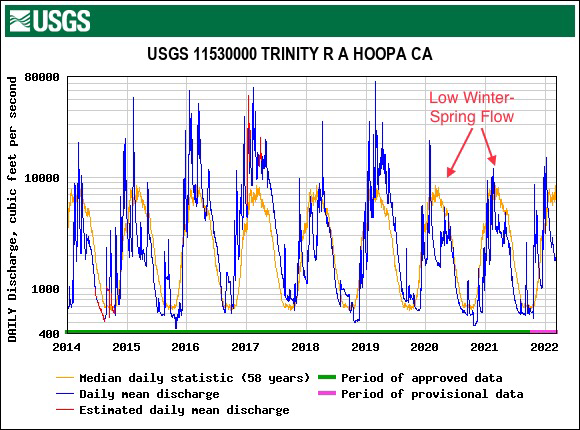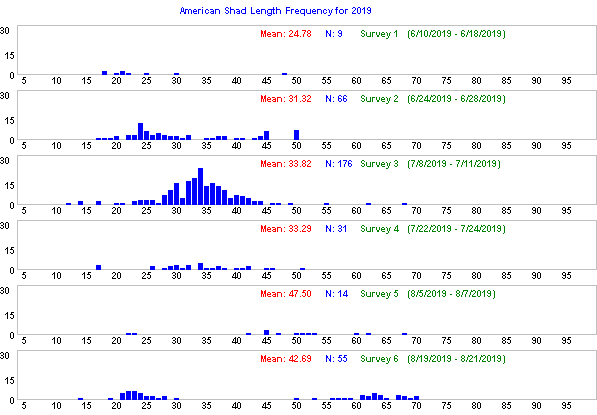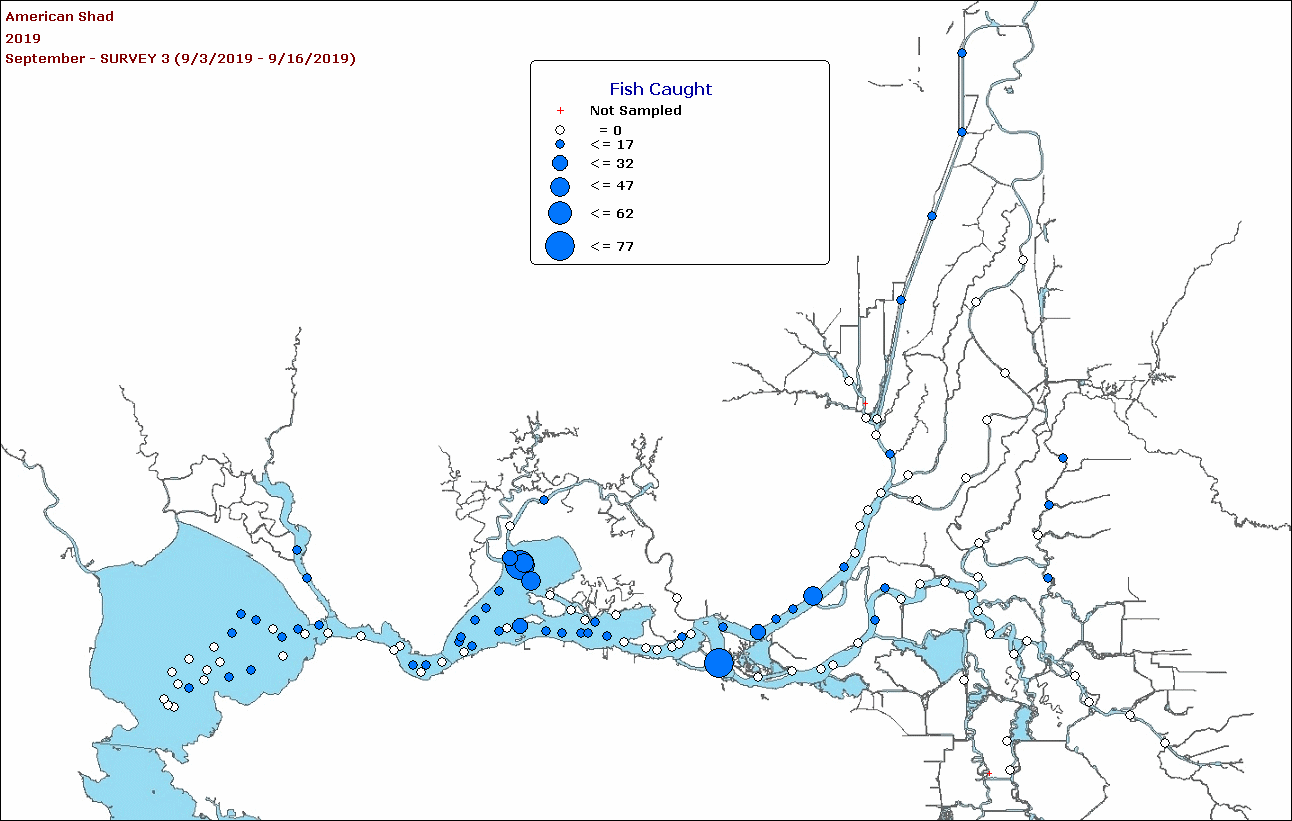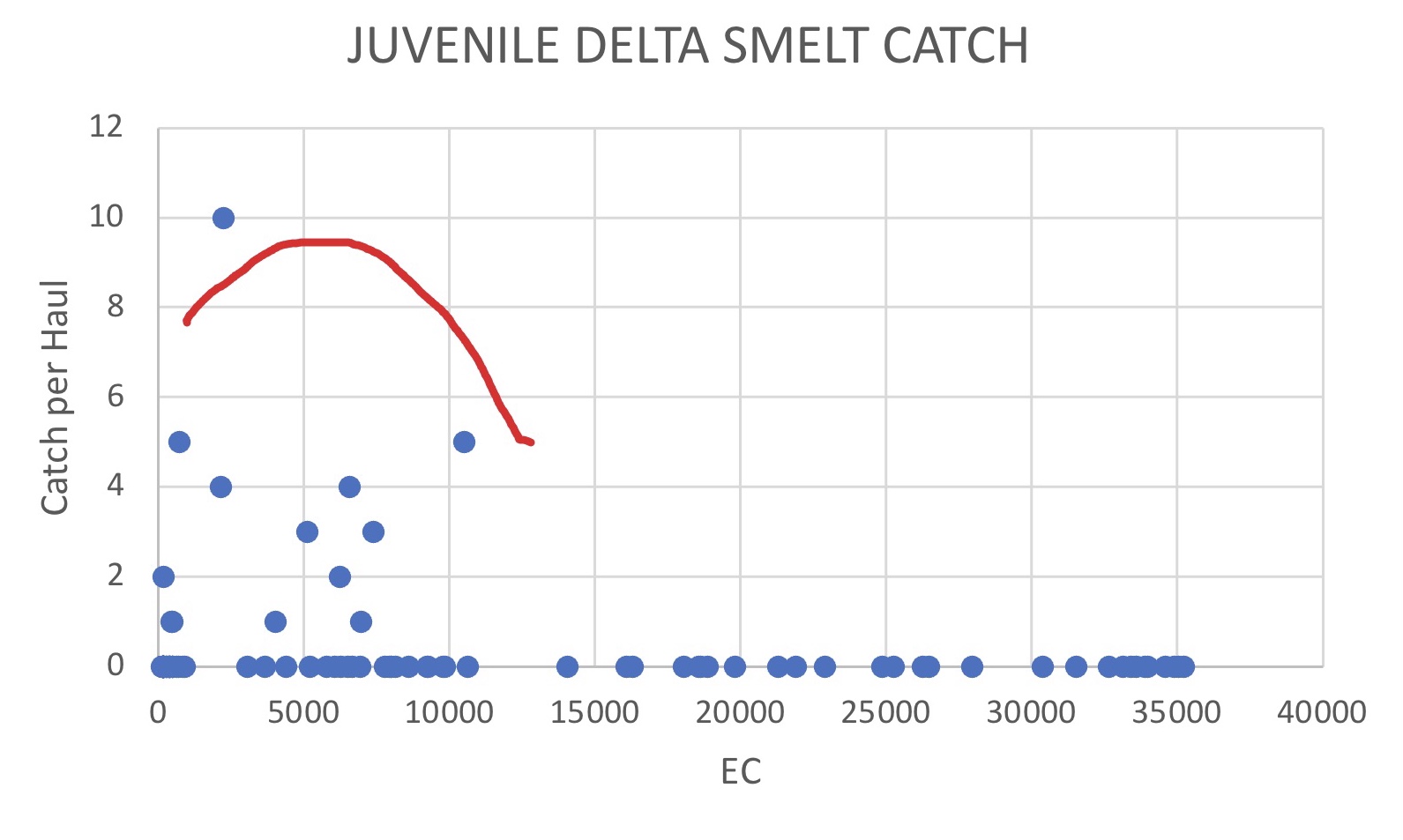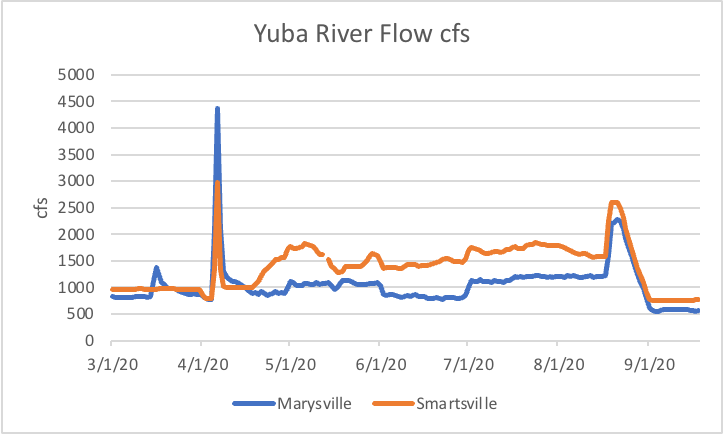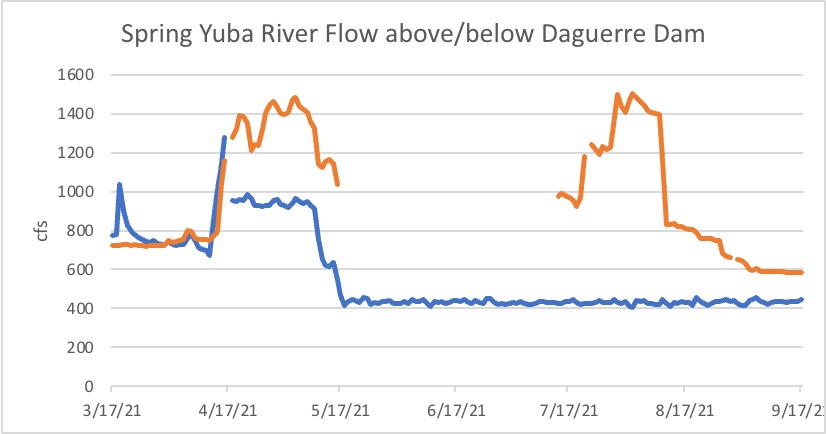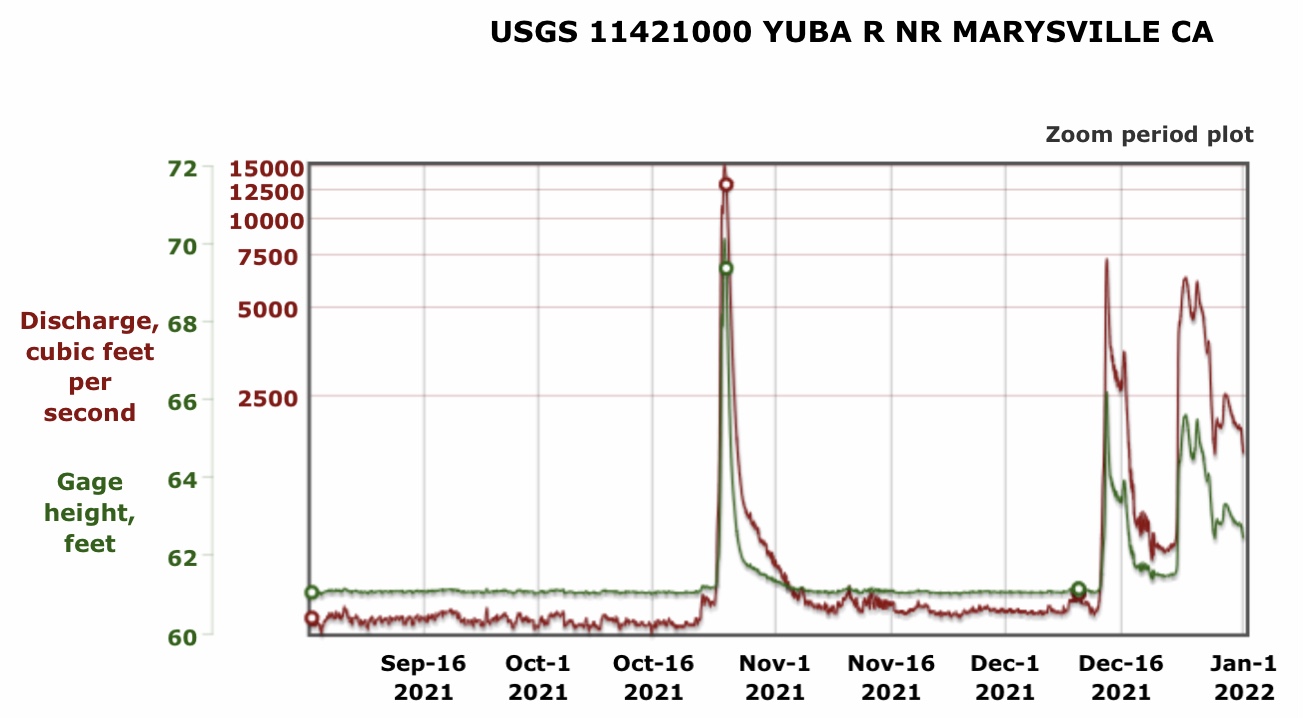
Over the past five years (2018-2022), federal and state biologists have undertaken a comprehensive study of salmon smolt migrations down the 350 miles of the Sacramento River from below Shasta Dam to the Delta, Bay, and ocean. The study released thousands of radio-tagged late-fall-, spring-, fall-, and winter-run hatchery and wild smolts in the Sacramento River near Redding (RM 290), then tracked their progress and survival as they proceeded to Butte City (RM 170), the Tower Bridge in Sacramento (RM 60), and Benicia Bridge at the head of San Francisco Bay. Each release group provides a story that is helping our understanding of salmon science in the Central Valley. Most important are lessons learned about drought and climate change. Much has been learned, with more to come.
An Example: Releases of Radio-Tagged Winter-Run Smolts
Radio-tagged winter-run salmon smolts from the federal Livingston Stone Fish Hatchery were released to the Sacramento River at Redding in winter of years 2018-2022. Their signals were detected from Butte City to the Benicia Bridge at the head of San Francisco Bay. For example, Figures 1 and 2 show detections from a release at Redding on 2/14/2019 of 650 radio-tagged smolts. Figure 1 shows detections over the winter and early spring at Butte City, 120 river miles downstream of Redding. Figure 2 shows detections at the Tower Bridge in Sacramento, 230 river miles below Redding.
Preliminary Findings
A summary of release-group survival in Table 1 indicates the following:
- Survival was significantly compromised in dry years 2018, 2020, 2021, and 2022 compared to wet year 2019.
- Survival was poor in the upper river and the Delta.
- December late-fall-run releases during wet periods in generally dry years had relatively high survival.
Other findings include:
- Smolts that received thiamine “boosts” in the hatchery had slightly higher survival.
- Approximately 20-25% of smolts are diverted into the central Delta at Georgianna Slough
- Survival among release groups within a year was often related to flow and/or water temperature after release (Figures 3 and 4).
- Fall-run salmon grown in 2020-2021 at the Coleman Fish Hatchery on Battle Creek had significantly higher survival when released at Butte City than when released directly from the hatchery about 80 miles upstream of Butte City.
Table 1. Percent survival summary for release groups by run and year.
Winter Run Hatchery Chinook – released at Redding
| Year | To Butte City | To Sacramento | To Bay |
| 2018 | 18.4 | ||
| 2019 | 64.5 | 23.3 | 25.6 |
| 2020 | 25.8 | 13.2 | 3.5 |
| 2021 | 25.8 | 10.1 | 3.6 |
Late Fall Run Hatchery Chinook – released at Battle Creek Hatchery
| Year | To Butte City | To Sacramento | To Bay |
| 2018 | 0.17 | ||
| 2019 | 23.5 | 4.8 | |
| 2020 | 76.1 | 60.4 | 16.9 |
| 2021 | 36.6 | 14.3 | 4.7 |
| 2022 | 75.5 | 17.1 |
Battle Creek Hatchery fall run – released at Battle Creek Hatchery
| Year | To Butte City | To Sacramento | To Bay |
| 2019 | 46.0 | 22.0 | |
| 2020 | 36.4 | 9.1 | 0.1 |
| 2021 | 0.3 | 0.0 |
Battle Creek Hatchery fall run – paired study
| Year | To Sacramento | To Bay |
| 2021 at Battle Ck | 1.7 | 0.0 |
| 2021 at Butte City | 26.3 | 4.7 |
Feather Hatchery spring run – released in lower Feather River
| Year | To Sacramento | To Bay |
| 2019 | 49.4 | 26.2 |
| 2020 | 26.8 | 2.6 |
| 2021 | 28.6 | 2.2 |
Wild Chinook Red Bluff Release
| Year | To Butte City | To Sacramento | To Bay |
| 2018 | 3.2 | ||
| 2021 | 2.2 | 0.0 | 0.0 |
American River Hatchery Chinook – lower American River release
| Year | To Sacramento | To Bay |
| 2018 | 68.1 | 2.0 |
Butte Creek Wild Spring Run – lower Butte Ck
| Year | To Sacramento | To Bay |
| 2018 | 27.2 | |
| 2019 | 16.3 | 1.5 |
| 2021 | 0.0 | 0.0 |
Battle Creek Start-up Hatchery Winter Run Chinook to Battle Creek
| Year | To Butte City | To Sacramento | To Bay |
| 2019 | 23.3 | 14.0 | |
| 2020 | 17.5 | 9.4 | 0.0 |
| 2021 | 11.5 | 3.3 | 0.2 |

Figure 1. Detections at Butte City of hatchery winter run smolts released at Redding with flow at Butte City gage 2/14/2019.
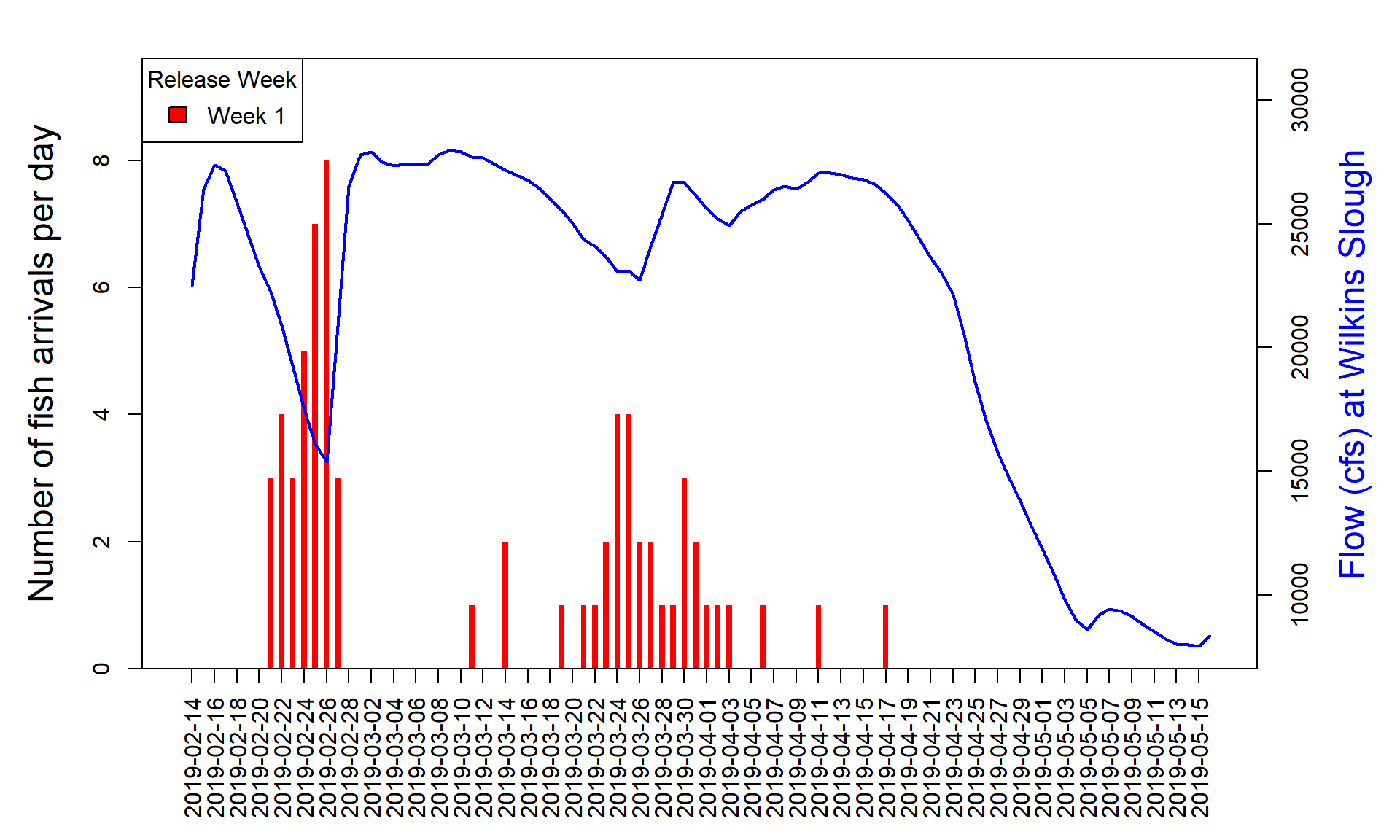
Figure 2. Detections at Tower Bridge in Sacramento of hatchery winter run smolts released at Redding with lower Sacramento River flow at Wilkins Slough 2/14/2019.
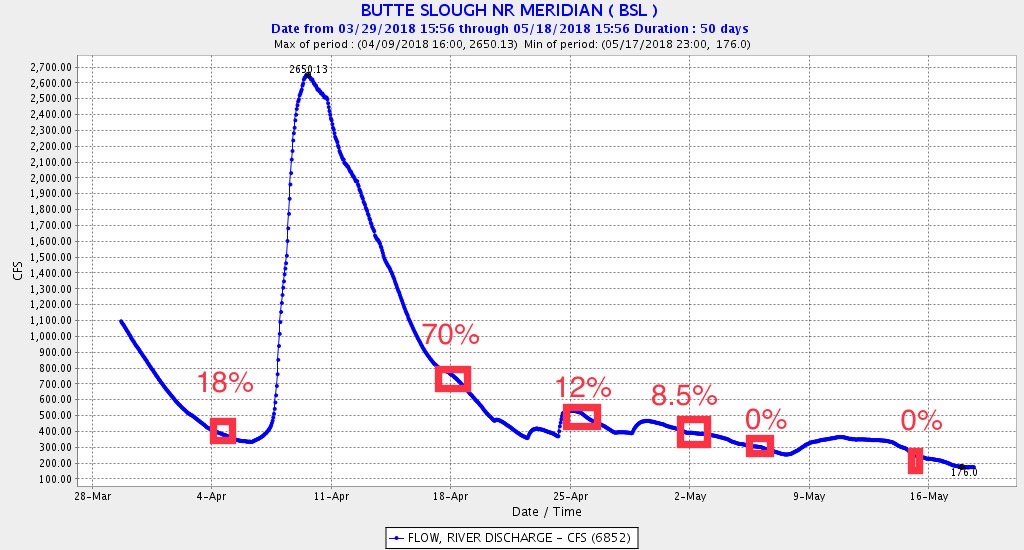
Figure 3. Survival rate to Sacramento of wild Butte Creek spring run radio-tagged release groups with Butte Slough flow in 2018.

Figure 4. Survival rate to Sacramento of wild Sacramento River fall run radio-tagged smolts, Red Bluff release groups with lower Sacramento River flow and water temperature at Wilkins Slough in 2018.


